In this tutorial, I'll show you how to edit images from Lightroom Classic CC easily and efficiently in Photoshop. The integration between both programs is extremely useful and allows you to make use of Photoshop's extensive editing options while retaining Lightroom's customizable development settings. This guide will take you through the process step by step, highlighting what you should pay attention to and which settings are optimal to leverage the benefits of both programs.
Main Insights
- Editing in Photoshop is ideally done via the PSD format to save space and preserve quality.
- Using smart objects in Photoshop allows you to edit your Lightroom settings retroactively.
- The process is flexible and facilitates working with external editing software and plugins.
Step-by-Step Guide
Preparing Settings in Lightroom
Before you start editing your images in Photoshop, you need to ensure that your Lightroom settings are properly configured. You should check the presets for external editing. Click on "Edit" in Lightroom and select "Preferences." Make sure the file type settings are set to PSD, as PSD is well-supported by Photoshop.
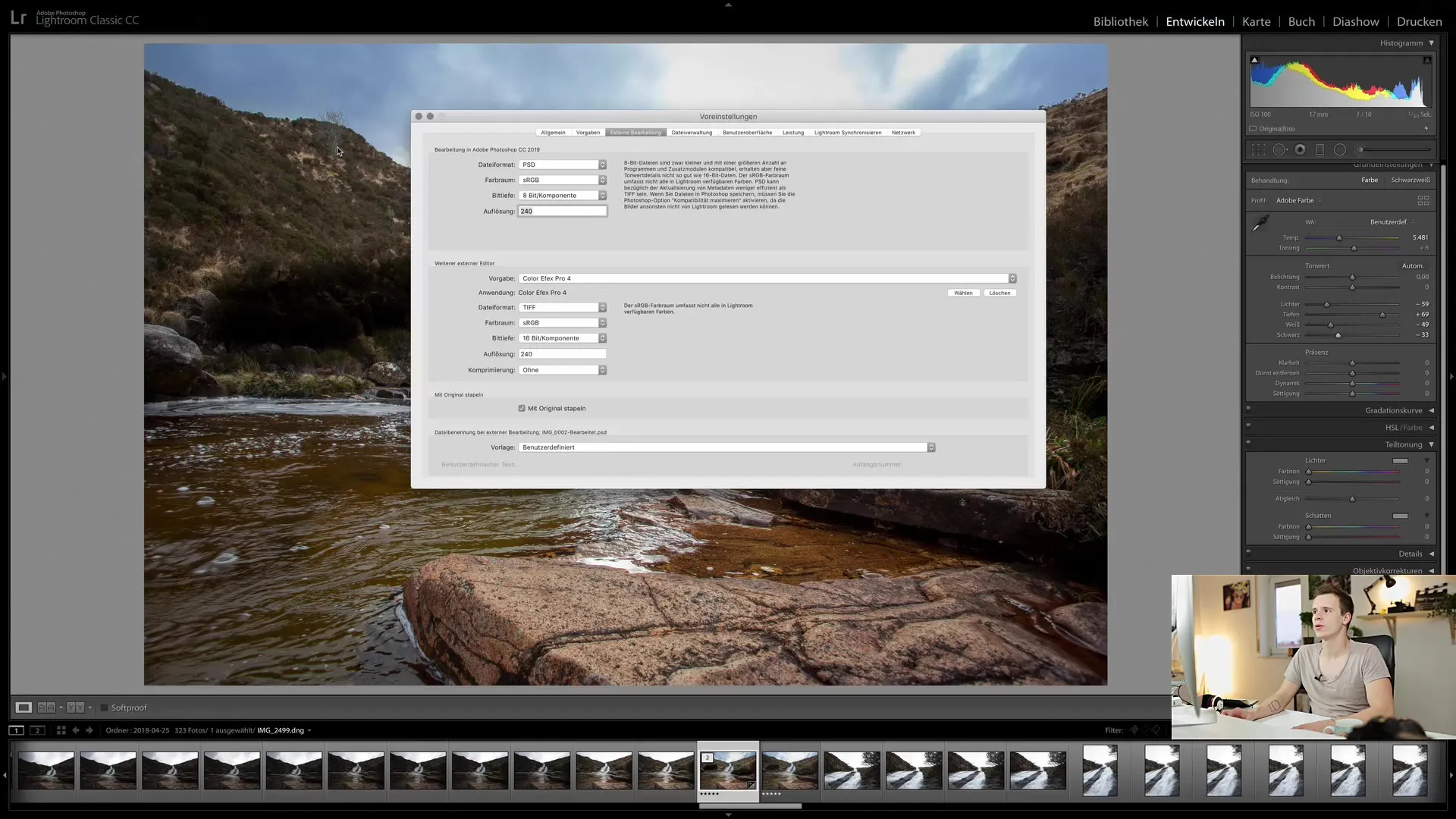
While the TIF format is also supported, it requires more storage space. PDF files offer better compression, meaning you save more space by using PSD. Additionally, using 8-bit color depth typically meets most requirements and allows you to revert back to iconic styles in Photoshop. For basic editing in Lightroom, 8-bit is more than sufficient.
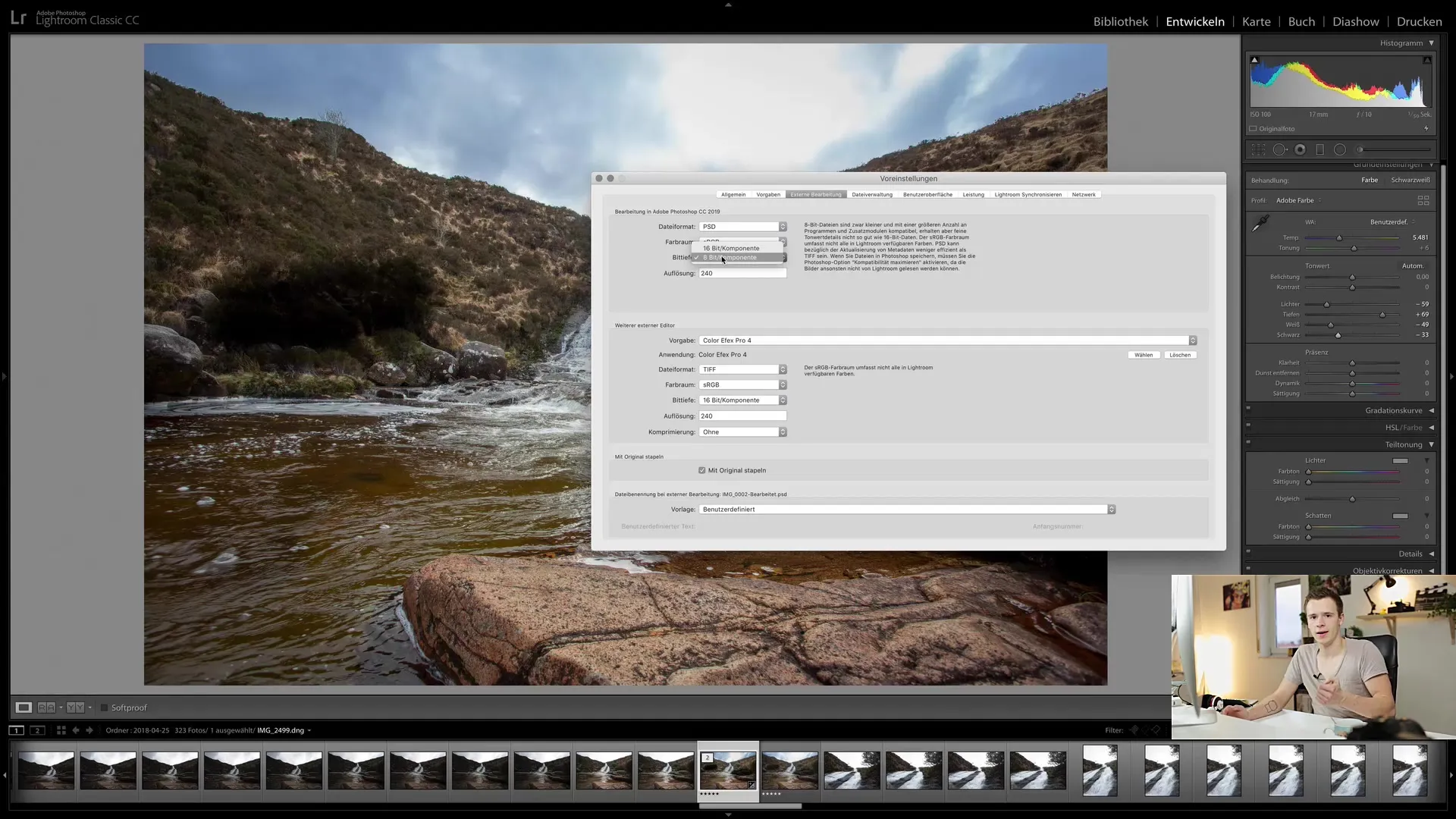
Also, check the color space and ensure it is set to sRGB. Resolutions are relatively unimportant in this context unless you plan on printing.
Image Selection and Opening in Photoshop
Now, select the image you want to edit. Right-clicking on the image in Lightroom will open a context menu. Here you can choose whether to edit the image in Photoshop as a smart object. Smart objects offer numerous advantages, making it easier to view and make post-adjustments to the edits done in Lightroom.
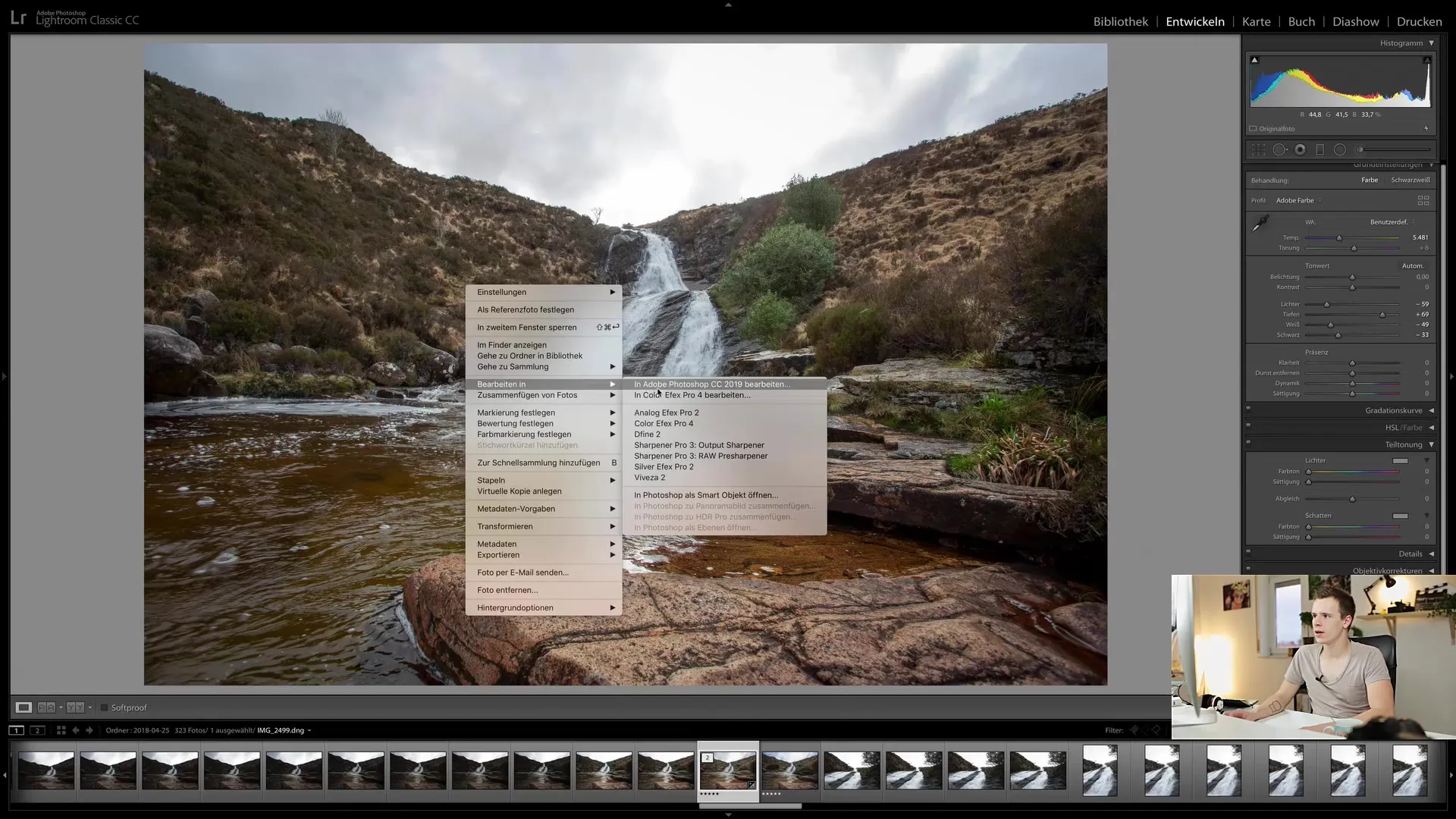
Select the option "Open in Photoshop as Smart Object." This ensures that you always see the latest Lightroom adjustments in Photoshop when changing the edits in Lightroom.
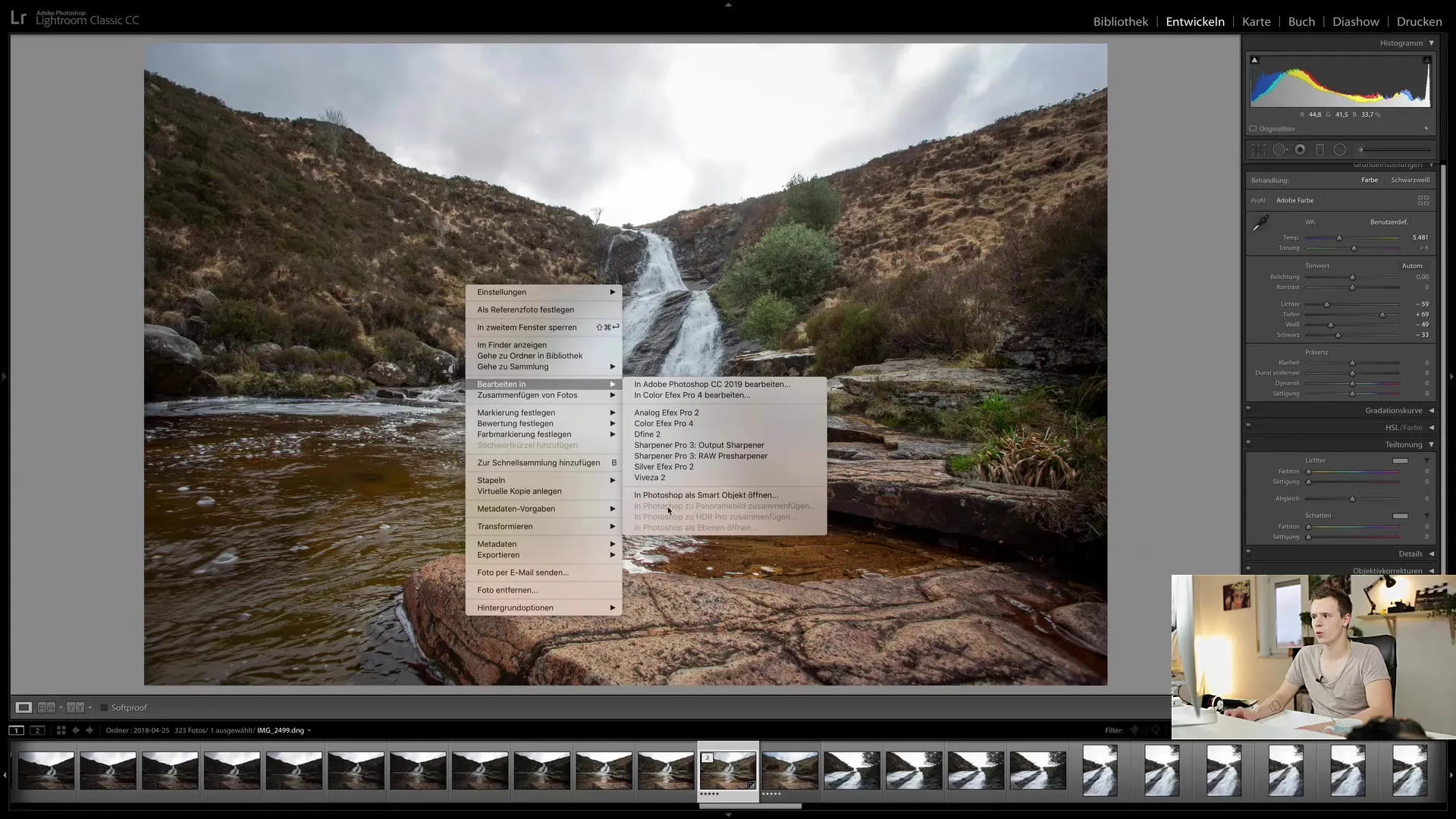
Conducting Edits in Photoshop
Once your image is open in Photoshop, you can start editing. You have access to all the tools Photoshop offers. A major advantage of smart objects is that you can still see and edit the adjustment effects from Lightroom in Photoshop. To view or change your Lightroom adjustments, simply double-click on the smart object.
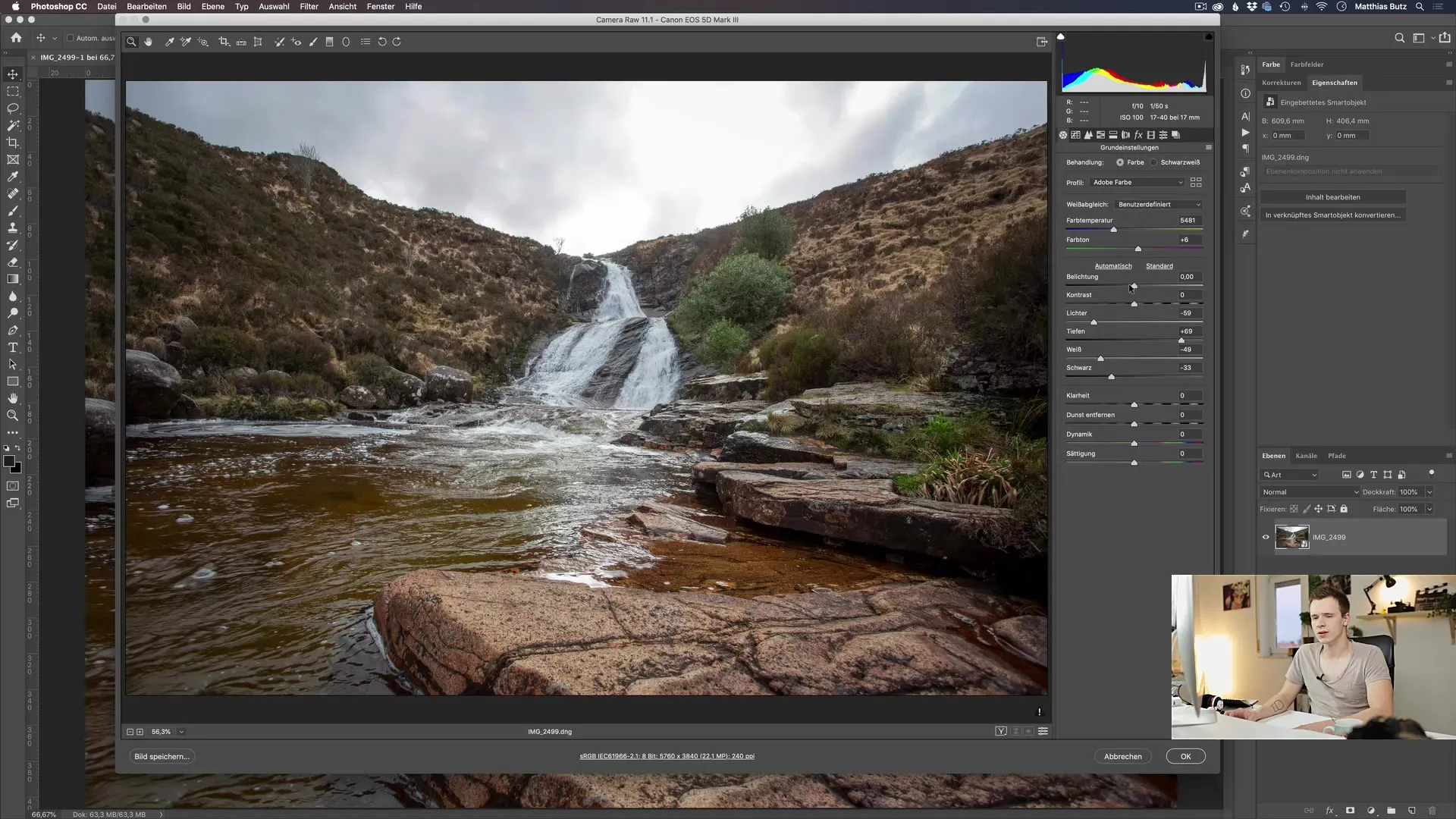
For example, if you realize your image should be a bit brighter, you can adjust it directly in Photoshop without losing the original editing settings.
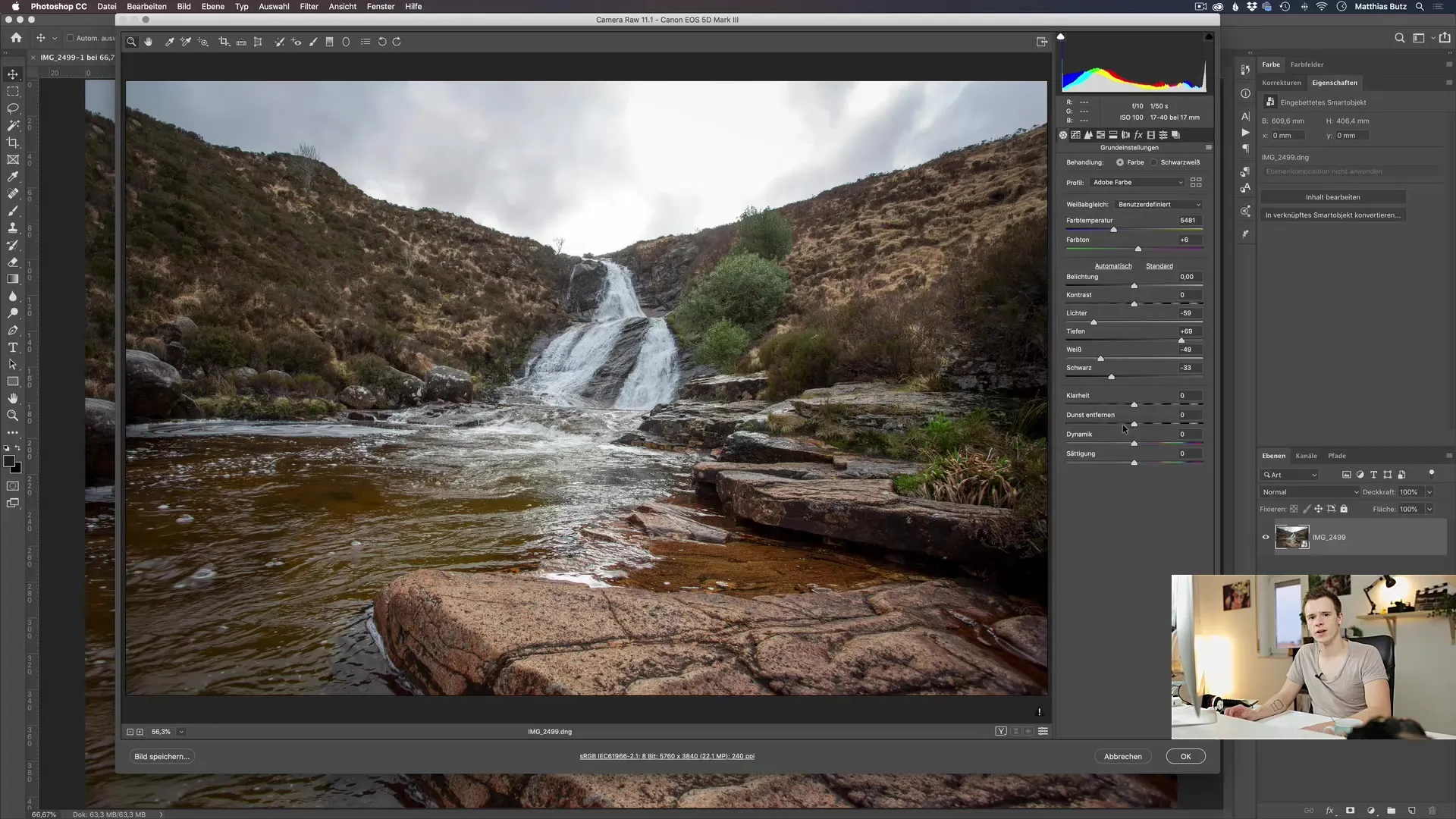
Once you finish editing, simply save the image. You can do this by selecting "File" and then "Save," or simply using the keyboard shortcut "Ctrl + S" or "Cmd + S."
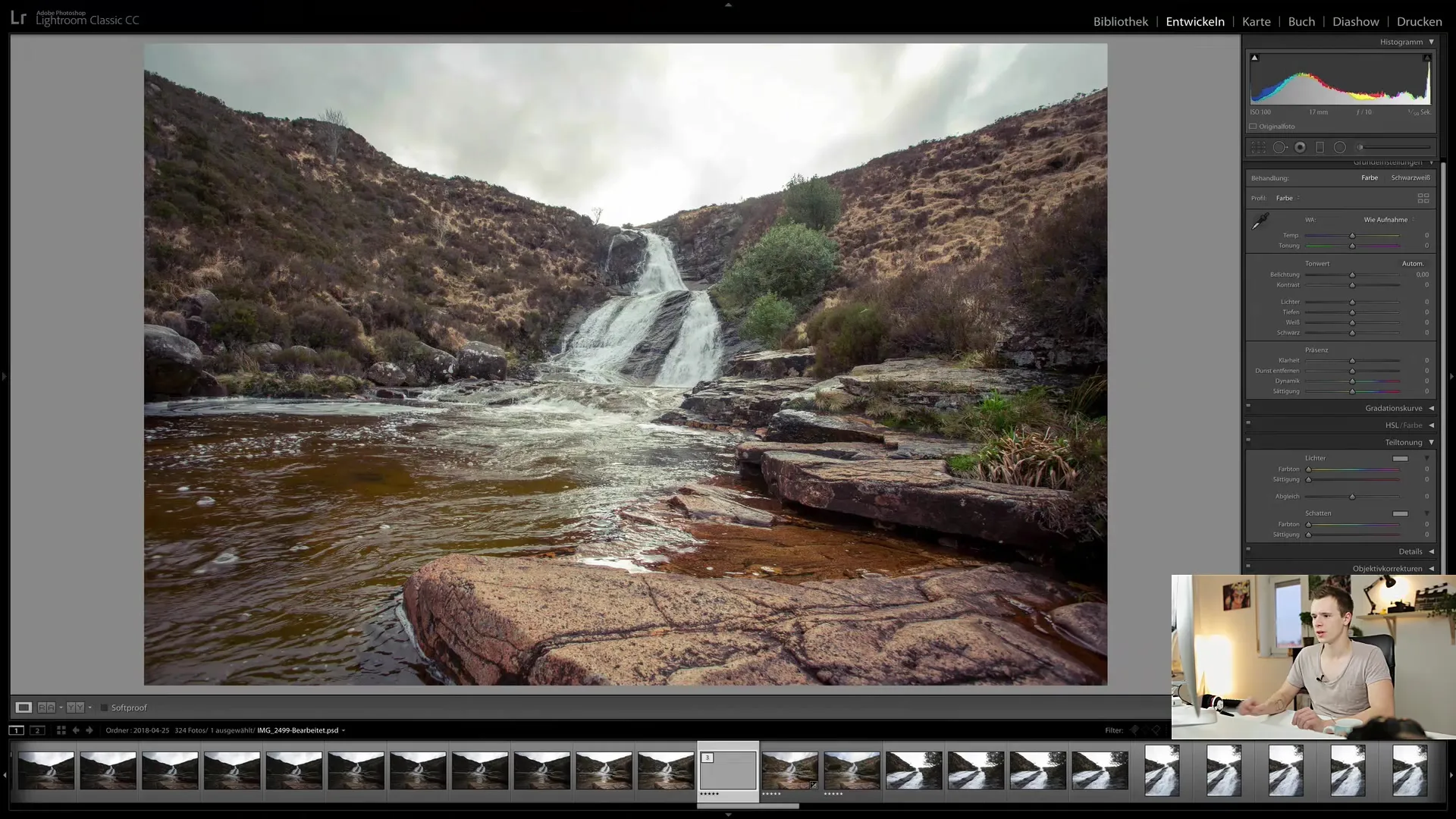
This will update the edited image in Lightroom, and you can see the changes immediately.
Returning to Lightroom
If you wish to continue editing the image in Lightroom, the question is how to do it. Simply right-click on the image in Lightroom again and select "Edit in Photoshop." There are various options such as "Edit a Copy" or "Edit Original." It is advisable to select "Edit Original" to keep the process clear.
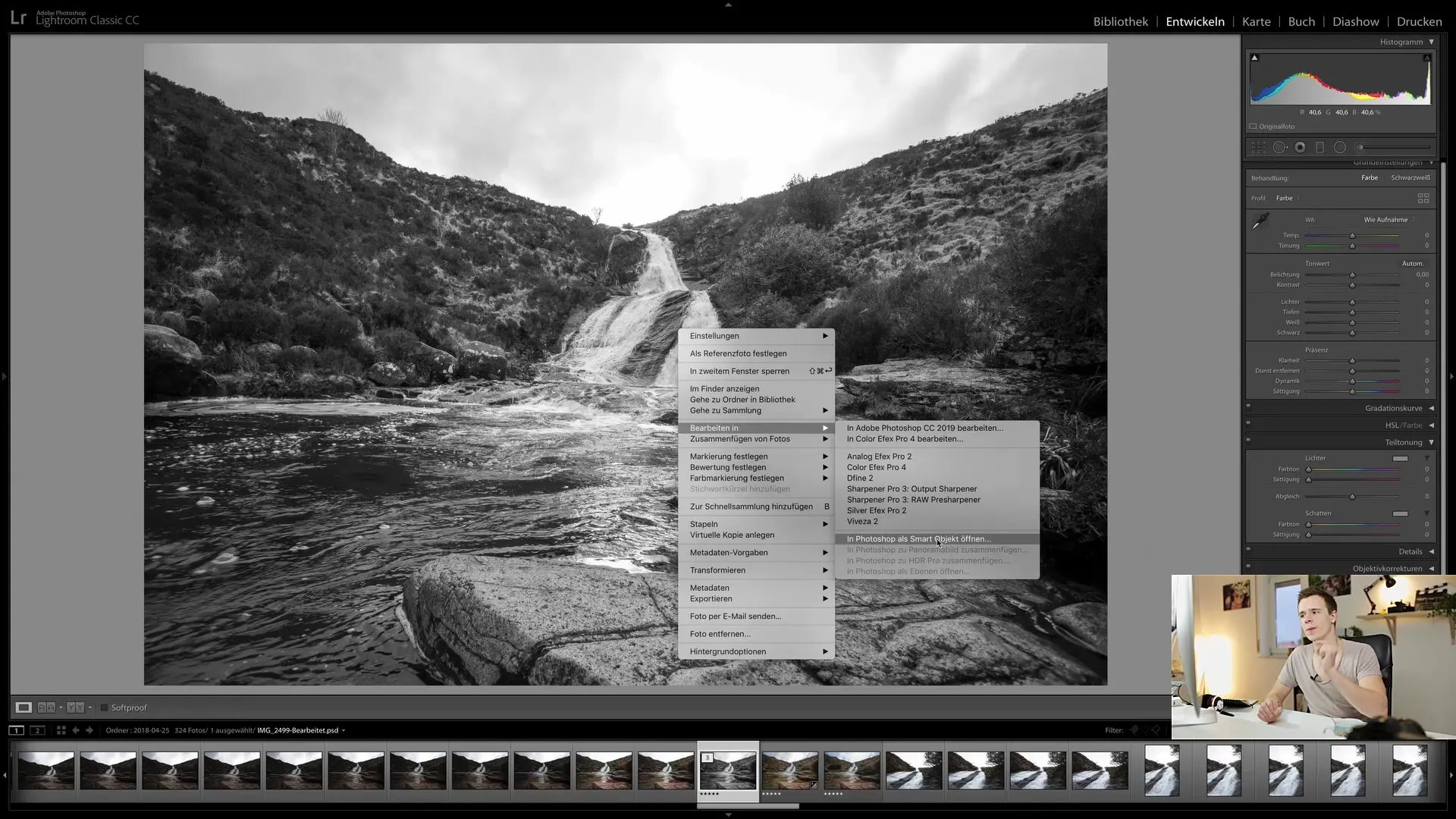
This method creates a clear separation between edits in Lightroom and Photoshop.
Using External Plugins
In addition, you can incorporate external plugins into your edits. You reopen Photoshop and edit the image with the desired plugin. The best part is that all files remain organized in a stack. If you edit different versions of the image, you can keep track and manage everything in one place.
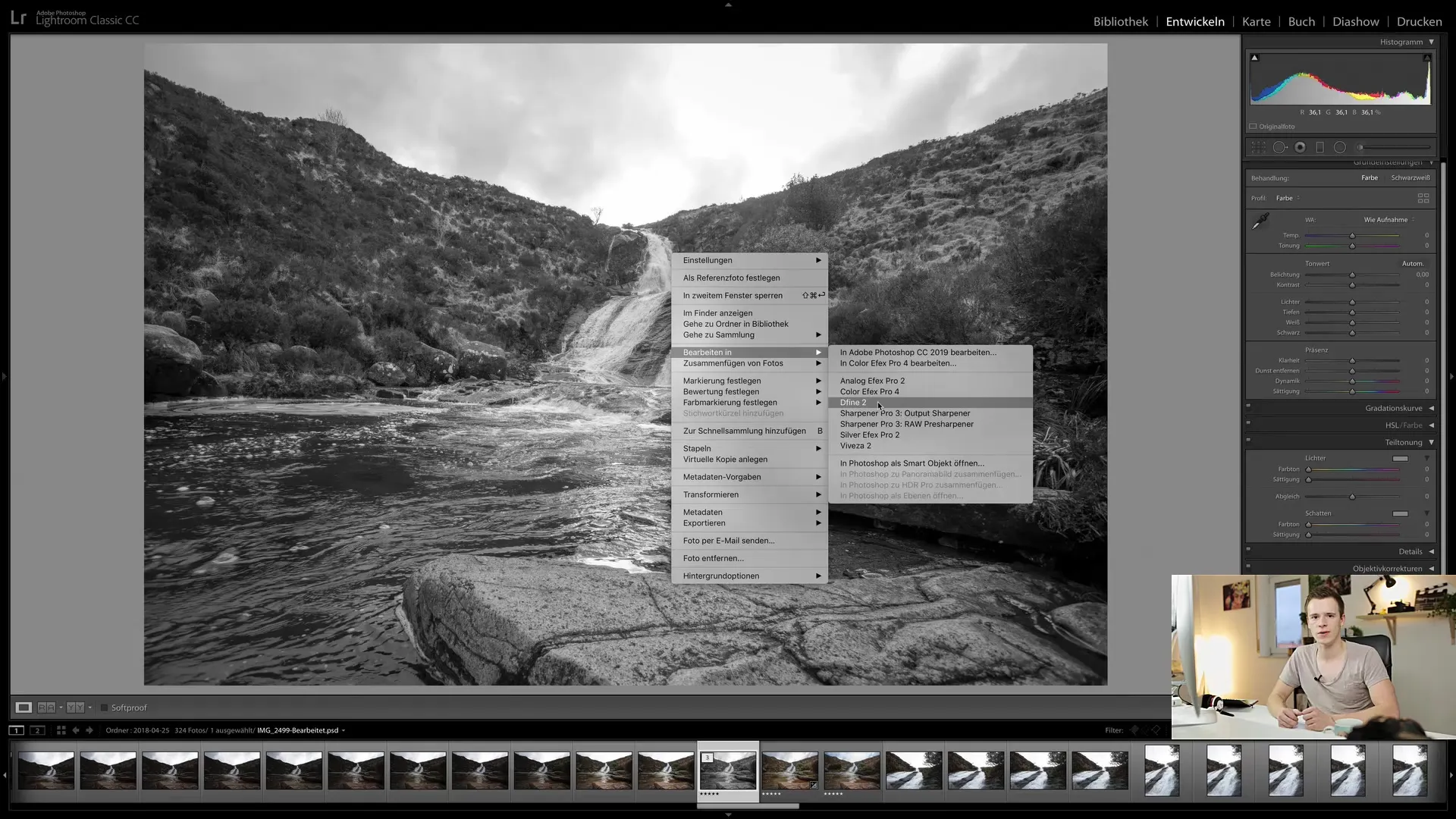
Summary
In this tutorial, you have learned how to transfer your images from Lightroom to Photoshop using the best settings and methods. The use of smart objects and the interchange between the two programs make the editing process much more efficient and flexible. Whether you want to make minor adjustments or perform extensive retouching, both programs provide you with the necessary tools.
Frequently Asked Questions
What is the advantage of smart objects in Photoshop?Smart objects allow you to change the Lightroom adjustments afterwards while still using Photoshop tools.
Why should I use PSD instead of TIF?PSD files offer better compression and save storage space compared to TIF files.
Can I continue editing in Photoshop after saving it?Yes, you can reopen the Photoshop file at any time and continue editing.


